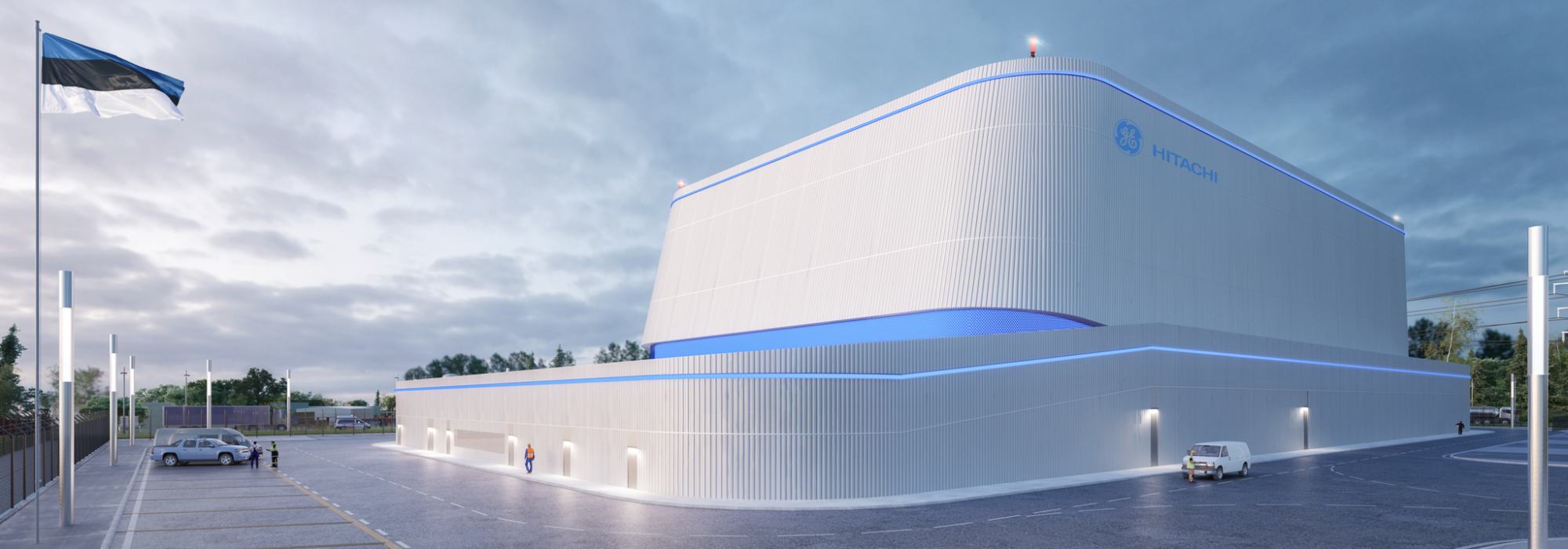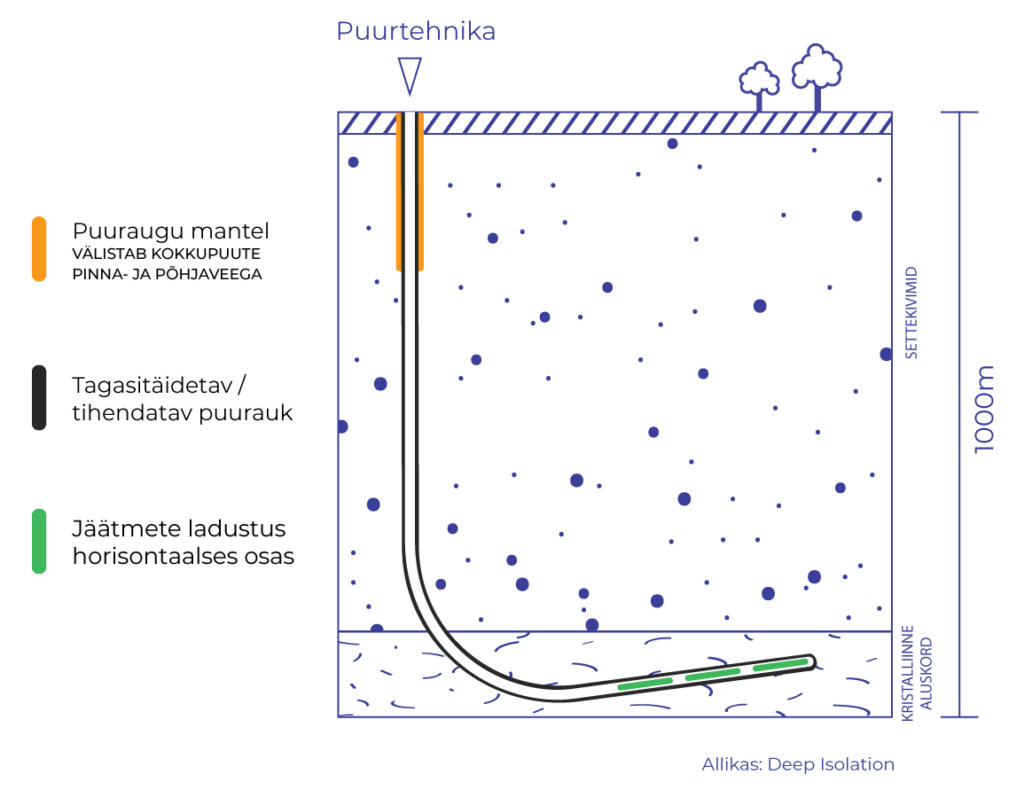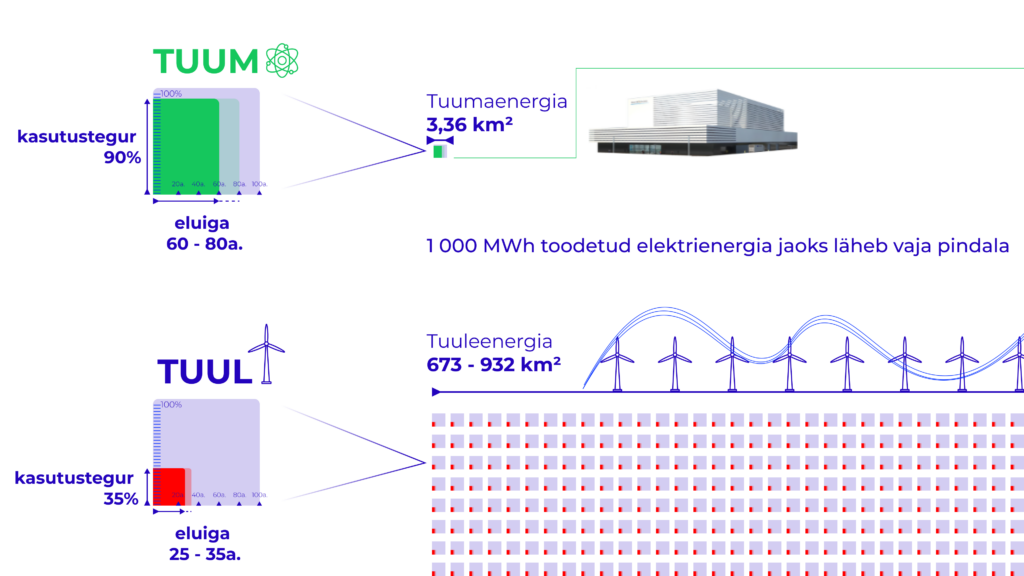Support the deployment of nuclear energy in Estonia!

NUCLEAR ENERGY IS
KINDEL
The plant produces energy 24/7, on average 93% per year in the Nordic countries, stopping only for maintenance.
Weather-independent energy will provide Estonia with the energy independence and security that homes and businesses need.
SOODNE
The new generation of modular reactors are efficient and economical.
We plan to sell electricity from the Estonian plant (based on 2021 projections) at an average price of €65/MWh, which is more than twice cheaper than today's universal service.
PUHAS
Nuclear energy is CO2-free and is classified as green energy in the European Union.
To protect the climate, CO2 emissions must be reduced in energy worldwide. The emissions charges associated with the use of fossil fuels are becoming increasingly expensive.
I support a thorough study of the possibilities of nuclear power generation in Estonia and, in the absence of any precluding circumstances, the construction of a nuclear power plant.
Share with a friend!
Want more information?
Frequently asked questions
While the construction of coal and oil shale power plants is relatively cheap (e.g. the 300 MW Auvere power plant cost €600 million), further fuel and pollution costs account for 80-90% of the electricity price. Nuclear power plants use very little fuel and it is relatively cheap (5-6% of electricity price), the main price component is the construction of the plant itself.
On the basis of the price offers received in 2022, it can be estimated that the construction of a nuclear power plant with a technology suitable for Estonia would also be affordable for a private company (which Fermi Energia is), with each successive reactor being cheaper than the previous one. In total, Fermi Energia is planning to build 2-4 reactors - a plant with a total capacity of 600-1200 MW would cover Estonia's firm capacity needs.
The selling price of electricity covers all the life-cycle costs of the station, including staff training, waste management and, finally, the cost of dismantling the station. The price of electricity also includes fees paid by the state to the regulator who oversees the plant's operation and safety.
Although nuclear energy is perceived as being expensive, it is in fact one of the cheapest forms of energy - as evidenced by. by both long-term operating experience and future projections.. Only a nuclear power plant can offer a stable electricity price in the long term, as there are no CO2 emissions and production is not dependent on weather conditions.
As a result, we are already offering Estonian businesses the opportunity to sign up to. memorandum future long-term electricity sales contracts. We are also developing a special offer for private customers.
In-depth studies and a pre-planning process are already underway. The training needs of experts, the cost of building and operating the station and the construction process are known. Nuclear power could be available in Estonia at the end of 2031.
Estonia is a small country, and a nuclear power plant powered by a small new generation modular reactor is suitable. Dozens of such reactors are under development, and thorough research has been carried out to select the best one for Estonia. analyses.
At the end of 2022, we asked three developers of small reactor technology to submit bids and selected the new generation small modular reactor from GE Hitachi, a joint venture between the US and Japan, as the most suitable technology for Estonia. BWRX-300, the first construction of which will start Canada. We are drawing on Canadian experience to plan the Estonian station.
The planning of any nuclear power plant includes the preparation of a waste management plan. A separate national planning process is needed for the final disposal of waste, but in Estonia's geological conditions, waste can be safely disposed of in 1.5 km deep boreholes in the bedrock of the Fennoscandia Shield.

Yes.
This is based on comparisons with other energy sources considered green, as confirmed by the European Commission's Joint Research Centre for Environment and Energy (JRC) report.
Nuclear power generation does not emit carbon dioxide, which is a major cause of anthropogenic climate change. Nuclear power also has a lower greenhouse gas emissions than other forms of energy. a smaller footprint in terms of both land and material use.

From Australia or Canada.
Nuclear fuels are a commodity bought on the world market and produced in many countries around the world. We do not need to be dependent on unfriendly countries for the extraction, enrichment or fuel production of uranium.
The small nuclear power plant employs around 70-150 people, the majority of whom are electricians, heat engineers, technicians and other specialists who work in various power plants in Estonia today. Only up to a few dozen more nuclear experts need to be trained, and this work is already under way. Fermi Energia provides scholarships to study nuclear energy at foreign universities and supports the acquisition of the basic knowledge needed to work in the nuclear field in various ways.
The regulator supervising the station will also need trained staff, about 30-50 people in total. Most of the necessary competences are already available in Estonia.
